
The adhesive behind a product label is often overlooked—until it fails. A label that peels, bubbles, or falls off can lead to wasted product, rework, compliance violations, and even full-scale recalls. These mistakes are costly, both financially and reputationally, for manufacturers who rely on their labels to communicate critical information and maintain brand trust.
That’s why selecting the right pressure-sensitive adhesive is so important. The right choice ensures labels stick securely, remain legible throughout a product’s lifecycle, and perform well in the environments they’re exposed to.
Let’s walk through the factors that determine successful label performance, and look at practical troubleshooting tips to prevent adhesion problems before they disrupt your supply chain.
3 Types of Adhesives for Pressure-sensitive Labels
Selecting the right pressure-sensitive adhesive is crucial for effective pressure-sensitive labeling. Different adhesives cater to different needs, ensuring product labels stick firmly, remain intact, and look good over time.
1. Permanent Adhesives
Permanent adhesives are designed to create a strong, lasting bond with the product’s surface. These adhesives are ideal for products that need to maintain their labels’ quality throughout their lifespan, such as food packaging, household goods, and industrial products. Their durable nature ensures that the pressure-sensitive paper does not peel off easily, even in harsh conditions.
Use cases:
- Frozen foods that require labels to stay intact in cold, moist environments
- Craft brew or wine labels that may be refrigerated or put in ice
- Cleaning supplies that may be exposed to water or chemicals
2. Removable Adhesives
Removable adhesives are formulated to adhere well but can be removed without leaving residue or damaging the surface. These are perfect for temporary product labels, promotional materials, or products that undergo frequent label changes. They provide the flexibility needed so labels can be updated or replaced periodically.
Use cases:
- Seasonal promotions or limited-time discounts on retail packaging
- Temporary product identification during production runs or quality checks
- Special edition packaging where labels are meant to be swapped after a campaign ends
3. Specialty Adhesives
Specialty pressure-sensitive adhesives include a range of formulations designed for specific applications. These options cater to unique needs to ensure optimal performance across diverse environments.
- Repositionable Adhesives: Ideal for product labels that require precise placement during application, such as on cosmetic jars or glass bottles.
- Ultra-removable Adhesives: Best for delicate surfaces like paperboard packaging or limited-edition collectibles that must remain pristine.
- High-tack Adhesives: Used for hard-to-label surfaces like plastic drums, textured containers, or outdoor equipment exposed to temperature fluctuations.
How to Select the Best Adhesive for Your Labels
Choosing the right adhesive is critical for product labels to perform effectively in their intended environments. The right pressure-sensitive adhesive helps prevent detachment, misalignment, or damage that can compromise product presentation and regulatory compliance.

Tip 1: Factor in the Environment
Where your product is stored and used has a huge impact on adhesive performance. If the adhesive can’t withstand its environment, product labels may curl, fall off, or become unreadable. Thinking through these conditions upfront saves frustration later.
- Freezer storage requires adhesives that stay tacky at low temperatures.
- Chemical containers need adhesives that resist harsh substances.
- Products exposed to direct sunlight benefit from UV-resistant adhesives.
Tip 2: Match the Surface Material
Even the best pressure-sensitive adhesive won’t perform well if it isn’t compatible with the surface. Different substrates have different “surface energies,” which affect how adhesives bond. By understanding the material, you can ensure a lasting connection between the label and the product.
- Common surfaces include plastic, glass, metal, and cardboard.
- Surface energy matters. Low-energy surfaces like plastics often need specialized adhesives.
- The wrong match can lead to peeling or poor adhesion.
Tip 3: Consider Your Labeling Process
How a label is applied matters just as much as where it ends up. Adhesives need to align with your pressure-sensitive labeling process, whether it’s slow and careful hand application or high-speed automation. Choosing the right pressure-sensitive adhesive for your process ensures smooth production and fewer reworks.
- Manual Labeling: Repositionable adhesives allow small corrections.
- Automated Systems: Require fast, consistent adhesion for high-speed production.
Tip 4: Stay Compliant with Regulations
Certain industries are heavily regulated, and adhesives must meet specific safety and compliance standards. Ignoring this step can result in recalls, fines, or even harm to the consumer. Building compliance into your selection process protects your brand and your customers.
- For food products, adhesives must be safe and non-contaminating.
- For pharmaceuticals, labels must stay intact and legible under strict guidelines
Quick Checklist: Narrowing Down the Right Adhesive
With so many variables at play, it helps to simplify the decision-making process. Before committing to a pressure-sensitive adhesive, run through these core questions to make sure the option you choose matches your product’s real-world conditions and requirements.
- What environment will the label face? (Cold, heat, chemicals, sunlight, humidity)
- What surface will it stick to? (Plastic, glass, cardboard, metal, textured materials)
- What process will apply it? (Manual, semi-automatic, or high-speed automation)
- What regulations must it meet? (Food safety, pharma compliance, other industry standards)
Troubleshooting Label Adhesion Issues
To quickly address common pressure-sensitive labeling problems, you must understand the factors that affect adhesive performance. By identifying and mitigating these issues, you can ensure your product labels remain securely attached and maintain their appearance throughout the product's lifecycle.

Effective Surface Prep
A clean, dry, and smooth surface is essential for proper adhesion. Dust, oil, or moisture can significantly reduce the adhesive's effectiveness. Ensuring the surface is properly prepared before product labels are applied can prevent many adhesion issues.
This might involve cleaning the surface with appropriate solvents, ensuring it is free of residues, and allowing it to dry completely before applying the label.
Managing Environmental Conditions
The conditions during label application are just as important as the environmental conditions the label will face during its lifecycle. High humidity or extreme temperatures during application can compromise the adhesive’s ability to bond effectively. It is important to control the environment and ensure it is within the recommended temperature and humidity ranges for the adhesive.
Tailoring Adhesive Strength
Matching the adhesive strength to the application needs is crucial. Overly strong adhesives on removable product labels can damage the surface, while weak adhesives on permanent labels can cause them to peel off. Selecting the right strength ensures the pressure-sensitive paper performs as intended.
For example, high-tack adhesives are suitable for rough or textured surfaces, while low-tack adhesives are better for temporary applications where easy removal is required without residue.
Storing and Handling Labels Correctly
Properly storing and handling labels helps maintain the adhesive properties. When labels are exposed to heat, light, or moisture, they can degrade adhesives over time. Storing labels in controlled environments helps preserve their effectiveness until application.
This means keeping product labels in cool, dry, and dark conditions, away from direct sunlight and extreme temperatures, to prevent the pressure-sensitive adhesive from deteriorating. You should also handle labels with care to avoid physical damage or contamination.
Most Common Label Adhesion Problems and How to Fix Them
Even with the right label design and printing, poor adhesion can derail a product’s presentation and performance. Labels that peel, fall off, or wrinkle look unprofessional and create compliance risks. Here are three of the most common adhesion issues manufacturers face and practical steps to resolve them.
1. Labels Peeling at the Edges
When product labels start lifting at the corners or edges, it’s typically a sign that the adhesive and surface aren’t working well together. This can happen if the pressure-sensitive adhesive isn’t designed for the product’s material, if pressure during application is too light, or if dust, oil, or moisture prevents proper bonding.
How to fix it:
- Switch to a high-tack or permanent adhesive when working with textured or low-energy surfaces like plastics.
- Apply more pressure or allow a longer dwell time during the labeling process to ensure full contact.
- Clean and dry surfaces thoroughly before application to eliminate contaminants.
2. Labels Falling Off in Cold or Moist Conditions
Labels that won’t stay on refrigerated, frozen, or damp products can be a headache. The issue usually stems from adhesives that are not formulated for cold temperatures or condensation. Storing labels improperly can also reduce adhesive effectiveness, especially if labels aren’t acclimated to the environment before application.
How to fix it:
- Use freezer-grade or cold-temperature adhesives designed to remain tacky under challenging conditions.
- Allow labels to acclimate to room temperature before applying them in cold or damp environments.
- Keep labels stored in a climate-controlled area to maintain adhesive integrity.
Wrinkling or Bubbling Labels
Wrinkles and bubbles ruin shelf appeal and can obscure important information. This problem can be linked to applying product labels too quickly or with uneven pressure. It can also happen when stiff adhesives are used on curved or textured surfaces.
How to fix it:
- Adjust your labeler’s speed and pressure to achieve smoother, more consistent application.
- Choose flexible film labels paired with conformable adhesives that mold easily to curved or irregular shapes.
How the Wrong Adhesive Damages Your Bottom Line
Selecting the wrong pressure-sensitive adhesive can be an expensive mistake. Adhesive failures lead to wasted product labels, damaged products, and extra labor as workers relabel items or stop production to troubleshoot. In regulated industries, mislabeled products may even trigger fines, recalls, or lost contracts.

Industry studies have shown that labeling errors can cost companies thousands of dollars per incident when factoring in downtime, rework, and potential compliance penalties. On top of these direct expenses, there’s the indirect cost of damaged brand reputation. A customer who sees a peeling or unreadable label may question the quality of the product itself, damaging trust in the brand.
By investing the time upfront to match adhesives with environments, surfaces, and application processes, companies can avoid these costly issues. A reliable label protects compliance and ensures products look professional while staying market-ready from production to point of sale.
Best Practices for Reliable Product Labels
Successful product labeling is more than just choosing the right adhesive. Here are some best practices to ensure your product labels perform at their best throughout the product lifecycle.

Select the Right Adhesive
Choosing the appropriate adhesive tailored to your product’s surface and environmental conditions is essential. Ensure compatibility with substrates and consider factors like temperature, moisture, and exposure to chemicals.
Additionally, testing different adhesives under real-world conditions can help identify the best option for your product, reducing the risk of label failure and ensuring long-term performance.
Achieve Precise Placement
Implementing accurate label application techniques is crucial for alignment and longevity. Utilize equipment like automated labelers to maintain consistency and reduce human error.
Properly training operators on how to use this equipment effectively can help minimize application errors and ensure each label is applied correctly and consistently across the production run.

Utilize Specialized Equipment
Invest in equipment specifically designed for high-quality label application. This includes label printers capable of producing durable, legible labels and labelers that ensure even placement and secure adhesion.
High-quality equipment can handle various label types and substrates, providing flexibility and reliability in your labeling process and ultimately enhancing the overall product presentation.
Consult Labeling Experts
Collaborate with professionals who specialize in labeling solutions. They can provide insights into adhesive selection, application methods, and troubleshooting techniques tailored to your specific product and industry requirements. Leveraging their expertise can save time and resources, and ensure that your pressure-sensitive labeling process is optimized for efficiency and effectiveness.
Label Testing for Quality Assurance
Conduct periodic tests to evaluate label performance under various conditions. This ensures product labels remain intact and legible throughout the storage, transportation, and usage phases.
Regularly reviewing and updating your labeling procedures based on test results can help identify potential issues early, allowing for proactive adjustments and maintaining high standards of quality and reliability.
Strong Labels Start With the Right Adhesive
Choosing the right pressure-sensitive adhesive is the foundation of successful product labeling. A well-matched adhesive keeps product labels intact through every stage of the supply chain, protecting your products, brand reputation, and compliance. The wrong choice can trigger peeling labels, wasted inventory, added labor costs, and even regulatory fines.
The best results come from pairing the correct adhesive with the right label material and equipment, ensuring every label looks professional and performs reliably under real-world conditions.
To dive deeper into aligning adhesives, labels, and equipment for flawless performance, download our Practical Guide to Choosing the Right Labeling Equipment and take the guesswork out of your next labeling decision.
.webp?width=200&height=114&name=2x-Packleader-logo-large%20(1).webp)

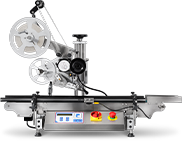
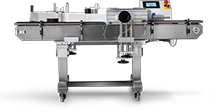
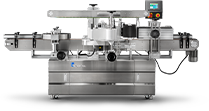
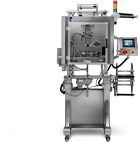
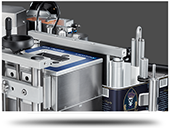
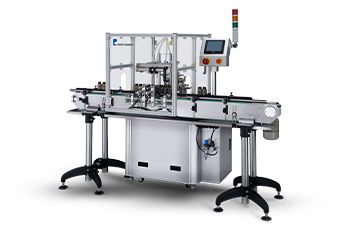
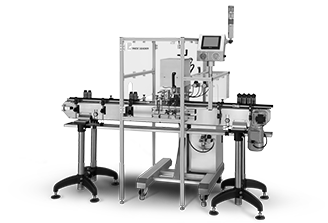
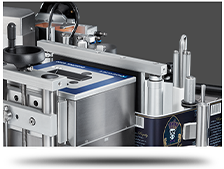






.webp?width=360&name=2x-color-logo%20(1).webp)